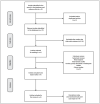Impact of super-spreaders on COVID-19: systematic review
- PMID: 33605305
- PMCID: PMC9632510
- DOI: 10.1590/1516-3180.2020.0618.R1.10122020
Impact of super-spreaders on COVID-19: systematic review
Abstract
Background: Spreader and super-spreader are terms that refer to people who have greater potential for disease transmission, to infect other people.
Objective: To present scientific evidence regarding the impact of COVID-19 spreaders.
Design and setting: Systematic review of the literature (using the PRISMA framework), performed at the Federal University of Santa Catarina (UFSC), Florianópolis (SC), Brazil.
Methods: A search for articles was carried out in the SciELO, LILACS, PubMed, Scopus, Bireme and Web of Science databases. A search for gray literature was also conducted via Google Scholar. There was no restriction regarding place or language, and the search covered the period from January 2010 to August 2020. Studies were selected based on a combination of descriptors from the Medical Subject Headings (MeSH).
Results: Isolated cases of people diagnosed with COVID-19 who were classified as super-spreaders were found. They had been classified thus because they may have had greater potential for infecting other individuals. However, greater numbers of interventions are needed in order to identify and manage COVID-19 cases. There is little evidence regarding this detection, which further hinders recognition and understanding of super-spreading events.
Conclusion: The scientific community needs greater depth of evaluation and understanding of how these patients physiologically develop the ability to propagate COVID-19 more intensely. A simpler way of tracking them is also necessary, given that many infected people are asymptomatic. Many patients also have mild symptoms, suggesting that these individuals could also be classified as possible COVID-19 spreaders.PROSPERO Number: ID 217874 (submitted for publication and is being assessed by the editorial team).
Conflict of interest statement
Figures
References
Publication types
MeSH terms
LinkOut - more resources
Full Text Sources
Other Literature Sources
Medical


